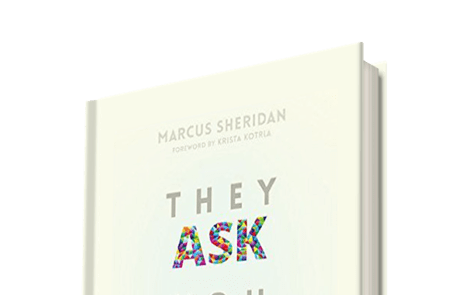
5 Stepping Stones To Content Marketing Success
Salespeople no longer guide the buyer’s journey. BtoB buyers do 2/3rds of the buying process online, and only 1/3rd with sales, says Sirius Decisions.
That’s why content marketing must make a buyer’s path clear. Imagine that the buying process is like crossing a river on stepping stones. Take one step at a time.
From your buyer’s perspective, the path is unfamiliar. Each step seems uncertain. If he loses his balance, he’ll fall into the water. His final destination may be unclear.
That’s why you need to offer the right content in the right media at the right time.
When there’s a gap in your content marketing, it’s like a missing stepping stone. It creates uncertainty, and forces the buyer to turn back and find another way. How can you ease the buyer’s journey? Here’s an infographic and a Slideshare presentation on how to map content to each step in the buyers’ journey.

Content marketing needs to guide the buyer step by step. The right content helps buyers discover you in the first place. Then, lead them smoothly through each step of the buying journey, so they find the right content at the right time.
The number of steps in a buyer’s journey varies with purchase size and complexity. You can keep buyers on track with the:
- Right topics: Synch content marketing topics to the needs of buyers at each step.
- Right media: Provide content in the media buyers prefer at each step.
- Smooth path: Make it easy for the buyer to take the next step.
First, focus on delivering content that’s about the right topic. Topics are driven by buyers’ needs at each stage of a sale:
1.) During pre-sales, buyers ask: Is there a need? Do we have a problem? How serious is it? Do we need to change they way we do things? Collect and understand customers’ questions. Create content to help buyers discover, analyze and understand problems. Tell customers something they didn’t know about a problem or opportunity they already have. Gain permission to send regular emails.
2.) During initial sales, buyers discover options, evaluate each and ask questions: How well does each option perform? Who can do the job cheaper? Who provides the best service? Create content that differentiates your offering from others.
3.) During mid-sales, buyers need to reduce risks and resolve concerns. They seek validation from customers through testimonials, site visits, social and news media. Offer case histories, videos and news stories about similar customers.
4.) During final negotiations, buyers select a vendor, negotiate terms and conditions, and finalize the purchase. Reinforce buyers’ decisions by reminding them of the solution benefits and differentiation.
5.) After the sale, buyers seek verification that they’ve made the right choice. Thank each customer for the sale. Provide users the in-depth information, service and support they need to succeed. Celebrate customers’ successes through case histories, videos, news and testimonials.
When you have happy customers using your solution, it’s time for content marketing to pivot to cross-selling and up-selling. Return to step one and begin again.
Next week: How to choose the right media for content on each step in the buyer’s journey.
Contact Us





